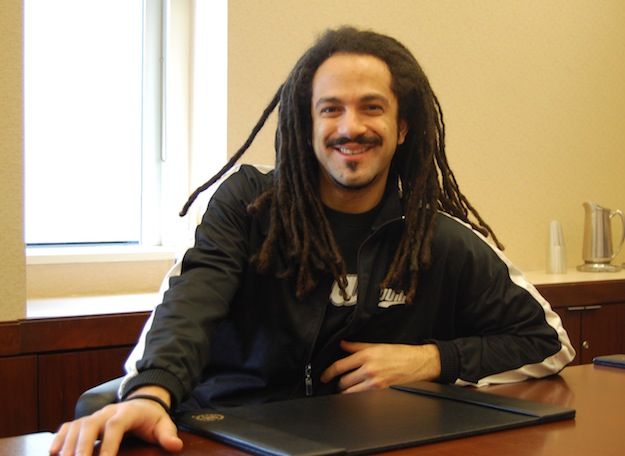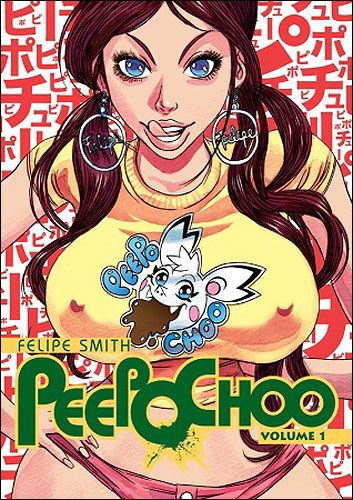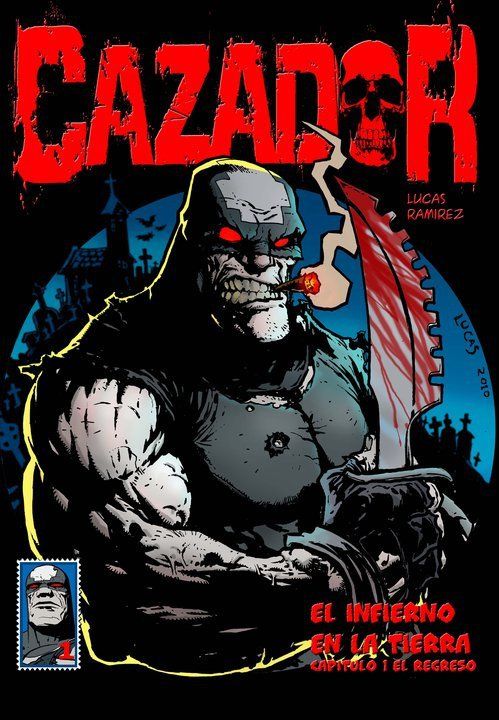Felipe Smith is unique in the manga world: He is an American manga artist working — and being published — in Japan. His three-volume series Peepo Choo was serialized in Kodansha's Morning Two magazine and then was licensed by Vertical for English-language release. Smith was born in Akron, Ohio, raised in Argentina, attended the School of the Art Institute of Chicago, and was living in Los Angeles when he drew his first graphic novel MBQ for Tokyopop, so he is truly a man of the world. He is between projects at the moment, but he implied that he has several pitches with different editors, and I'm quite sure we have not heard the last of him.
Smith was one of the invited guests at MangaNEXT, where I interviewed him in company with another journalist, although "interview" is an overstatement — it was more like taking dictation, with the occasional question thrown in as a prompt. So I'll dispense with the questions, which were little more than starting points, and just let Felipe do the talking.
On having his own style:
One thing, no matter what I do, everybody knows I did it. I would rather have a handful of people hate my work but know its mine than have work that pleases people but is easily forgotten.
On the life of a manga-ka:
I didn’t have a life. I can write half of my script in Japanese, but when it gets to the really detailed, more emotion-based dialogue, I go to English because my vocabulary isn’t where I want it to be, and then it is translated and I check the translation. The drawing part, I work pretty quickly, so that is how I am able to catch up. That's how I am able to do it, but that comes at a price. I don’t really have a life. I had maybe three days off every month. And if I took days off I would end up having to do six pages a day, which is what happened.
On character design:
I would say [to his first editor], "Listen, to a Westerner, none of your characters look Asian. You have characters that look black, white…" They got upset by that and said, "They are characters," but it's perception. I have to obviously take those things into consideration when I am working, when I do character designs, which I really enjoy. The way the character looks can describe the character immediately, and the way the character looks can also mislead the reader to your advantage, like an actor in a Hollywood movie — this is the character you have to trust, you are following them for the whole movie because he is the hero, then at the end they turn out to be the worst person in the world. So giving them what they want sometimes and giving them what they are not expecting is all part of a good story.
On realism in comics:
I have had this conversation with editors — I say, "I don’t know anyone in Japan like this" — but reality in different cultures is different. If I draw someone on a train pulling a gun out of his pants, that's a harsh reality in this country, but that is not realistic to any Japanese reader. When you are doing something with a global audience in mind, which is what I try to do, you have to plan for these things—what will a Japanese reader see, what will an American. That's one of the reasons I don’t read a lot of comics as of late in Japan. Now that I have lived there, I see this isn't Tokyo, nobody behaves this way....
I'm trying to figure out what their standard of reality is. When I went to Japan I had this story with cast of six main characters. Most Japanese comics only have one, so already it was different. Some were American, some Japanese. I wanted this to be realistic in terms of how they relate to each other — obviously, most Japanese people don’t speak English, so how will these characters interact? I had to have educated Japanese characters who spoke English — I had this yakuza guy who was educated and I had this teenager girl who was just interested. But half of these stories with foreigners who are interacting with Japanese people are nonsense. You got stories with people high-fiving people — Japanese people don’t do that — and people hugging. I said [to my editors], "It's not in your culture, why is it in your comics?" They say "Because it's manga — you can do anything."
On his favorite creator:
There was this British comic artist Simon Bisley, he did Slaine, the Horned God [in 2000AD], Lobo, in the states, with DC, then he did Batman vs. Judge Dredd, then he did the Bible, all painted, and a lot of covers for heavy metal magazines. His stuff is in your face, violent, but ludicrous, cartoony violent, a lot of exaggerated forms, rock and metal aesthetics. That guy blew my mind when I was in high school. He had a really kinetic style, in your face and funny and crude. There was a comic book in Argentina called Cazador, they loved his work and aped him, but in Argentine. I got to meet him and it was cool. I have been fortunate enough to meet most of my art idols. Sometimes it was great, sometimes it was really bad—they were not cool to me. Definitely when I meet people who are aspiring comic book artists or manga-ka I always try not to be that idol I had that was a complete jerk to me. Once you meet an idol and they turn out to be a complete bastard, you start losing their respect for their work as well.



